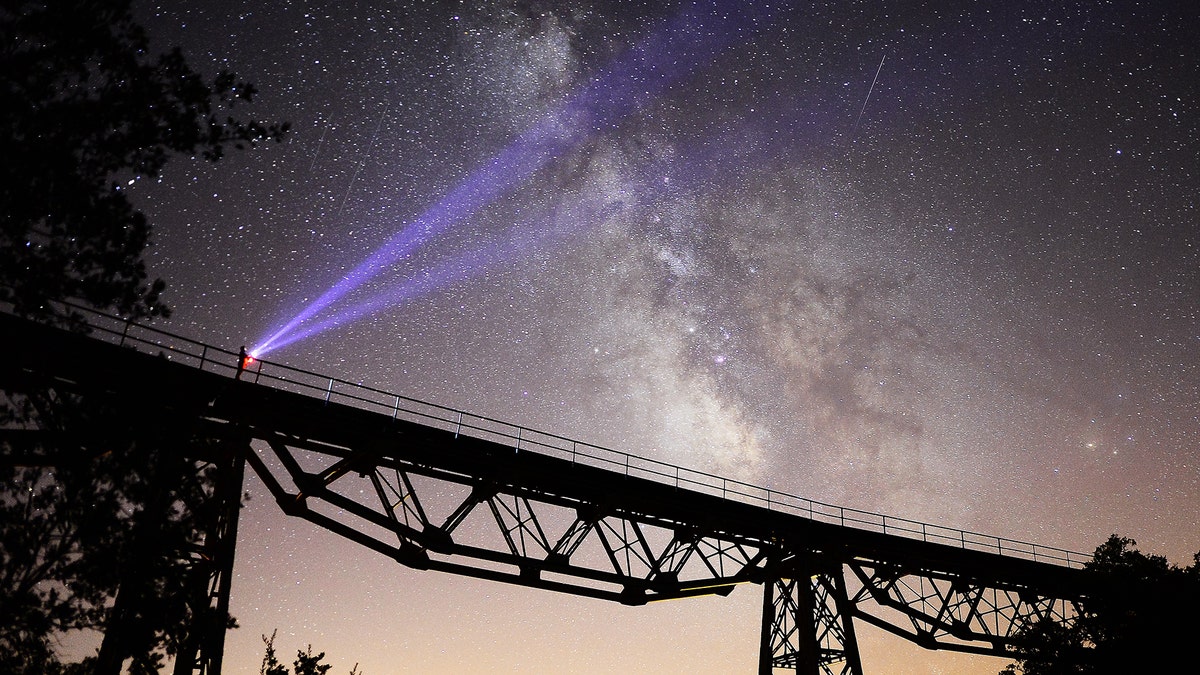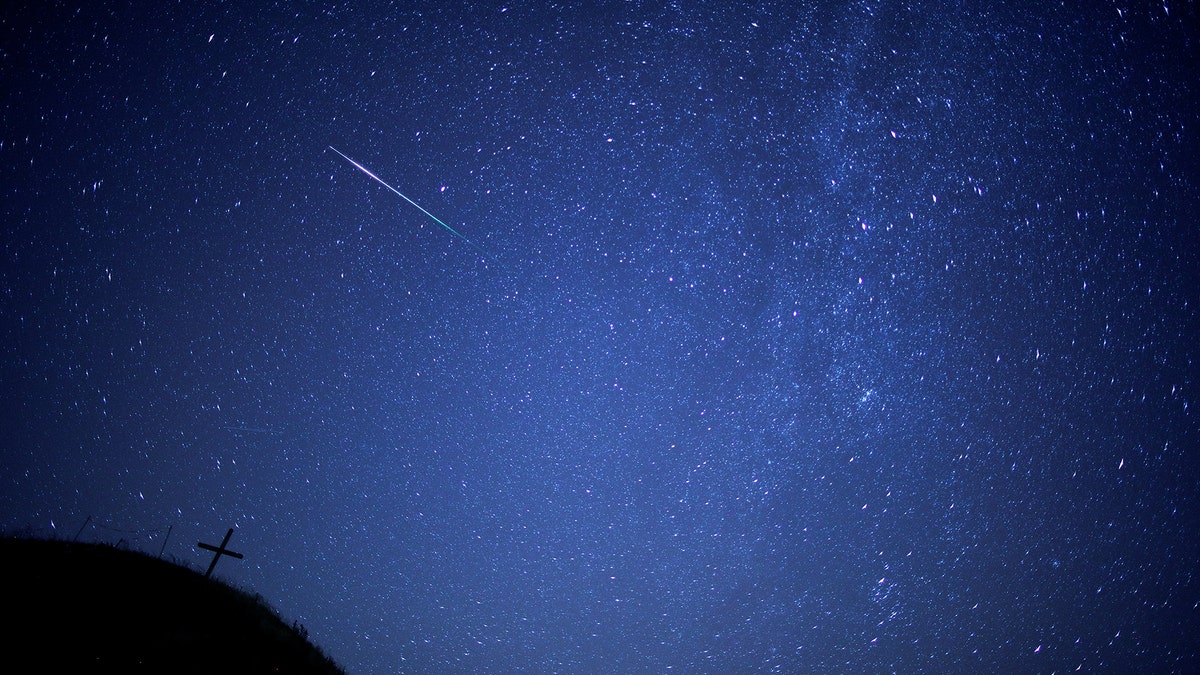Meteor flashes across the sky over St. Louis
Raw video: EarthCam.com live stream captures a bright meteor streak across the St. Louis skyline.
Stargazers are in for a treat early Wednesday when the annual Perseid meteor shower reaches its peak.
The Perseid meteor shower occurs when pieces of the Swift-Tuttle comet hit Earth's atmosphere. The meteors began streaking across the skies late last month and will peak in the pre-dawn hours of Aug. 12, NASA officials wrote in a blog post.
“Make plans to stay up late the night of Aug. 11 or wake up early the morning of Aug. 12,” NASA officials wrote. “The Perseids are best seen between about 2 a.m. your local time and dawn. The Moon rises at around midnight, so its brightness will affect the peak viewing window.”
AMATEUR ASTRONOMER USED NASA SATELLITE DATA TO DISCOVER NEW COMET
The Moon will reduce the number of visible meteors from 60 per hour down to 15 to 20 per hour. “Even though the Moon’s phase and presence will keep the frequency of visible meteors lower, there is still nearly one meteor every two minutes during the peak!” according to NASA.

A photographer holds a flashlight up to the night sky as Perseid meteors streak across the sky in Esme district of Usak, Turkey, on August 14, 2018. (Soner Kilinc/Anadolu Agency/Getty Images)
A few Perseids will also be visible after 9 p.m. Tuesday, according to the space agency.
“If it’s not cloudy, pick an observing spot away from bright lights, lay on your back, and look up! You don’t need any special equipment to view the Perseids – just your eyes,” according to NASA. “Meteors can generally be seen all over the sky so don’t worry about looking in any particular direction.”
A MAN DIGS UP BOULDER IN HIS GARDEN, NOT REALIZING THAT IT WAS A HISTORIC METEORITE

A meteor streaks past the Milky Way in the night sky above Leeberg hill during the Perseid meteor shower in Grossmugl, Austria, Aug. 12, 2018. (REUTERS/Heinz-Peter Bader)
The meteor shower is named for the constellation Perseus, the part of the sky, or ‘radiant’ where it appears.
CLICK HERE TO GET THE FOX NEWS APP

A streak from the Perseid meteor shower shoots above the Mojave Desert as seen from Nevada State Route 164, also known as the Joshua Tree Highway, about 10 miles west of Searchlight, Nev., early Aug. 13, 2018. (Richard Brian/Las Vegas Review-Journal via AP)
A small chunk of an asteroid or comet is also known as a meteoroid. When it enters the Earth's atmosphere, it becomes a meteor or fireball or shooting star. The pieces of rock that hit the ground, which are valuable to collectors, are meteorites.
Follow James Rogers on Twitter @jamesjrogers

